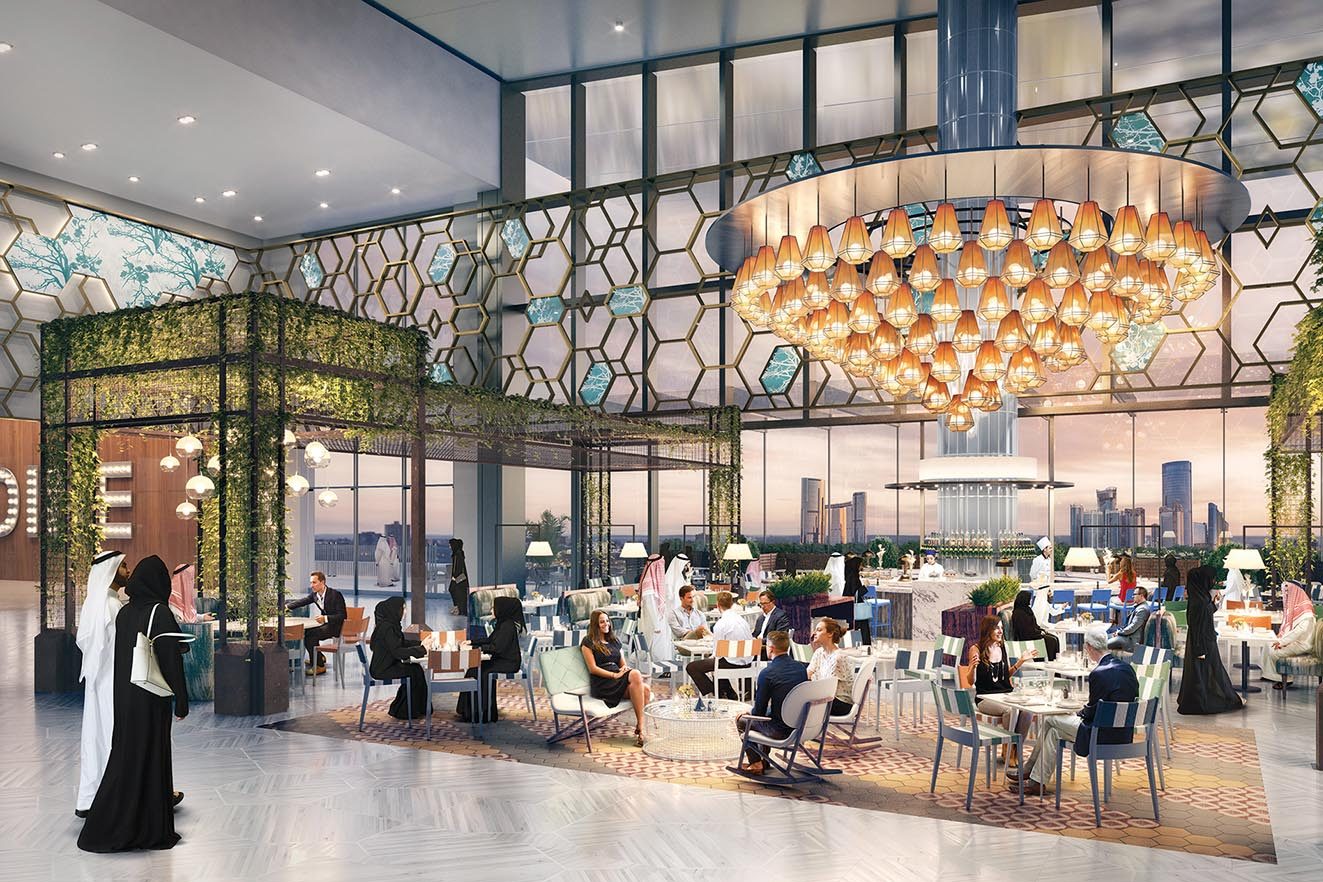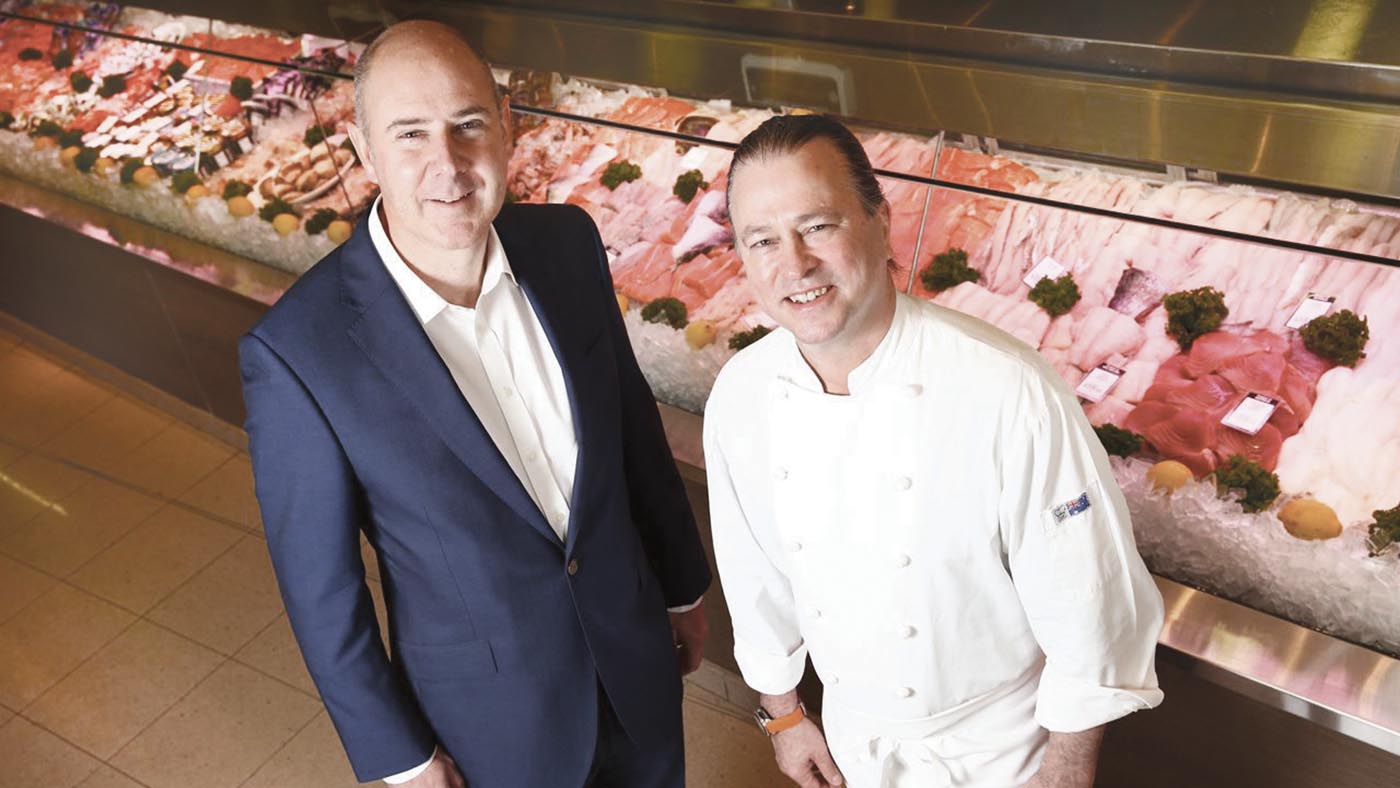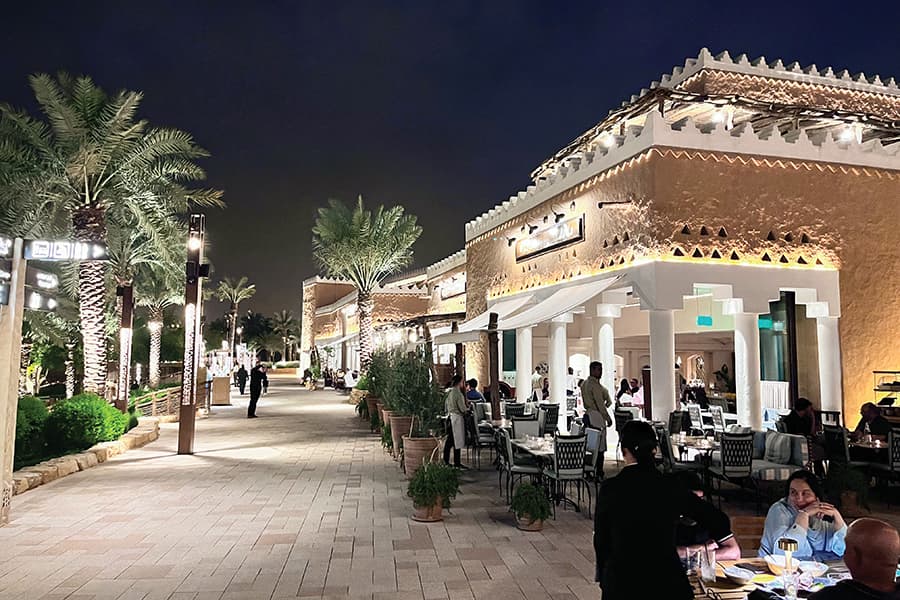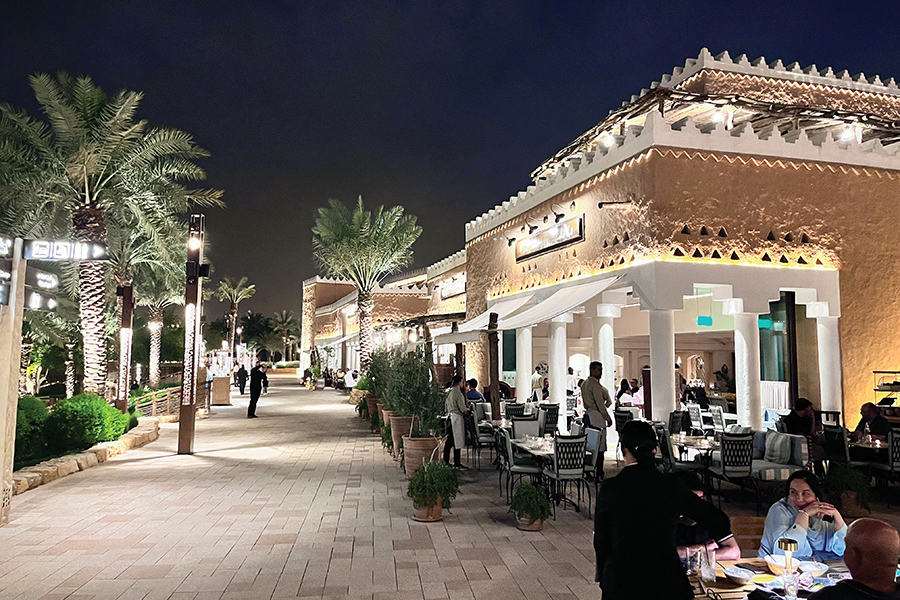In this two-part article, Francis Loughran explores how first principles in food and hospitality masterplanning challenge the endless threat of the internet and technology as disruptors in retail.
Globally, the field of food and hospitality continues to grow in GLA and MAT terms, and we predict there is no finishing line in sight. It’s all about understanding asset growth potential by adopting non-retail planning principles and thinking of a shopping centre as a multidimensional asset offering the best in hospitality, entertainment, tourism, retail and customer experience. It is a well-established fact that a food and beverage strategy, in retail precincts as well as other customer-centred developments, is capable of differentiating the bricks-and-mortar precincts from the online, intangible counterparts.
In Australia today, approximately 55% of our shoppers enjoy a host of cafes and food options, and a growing number of shoppers choose their shopping malls and food precincts on the basis of a great food and hospitality offer. This has been proven time and time again when it comes to creditable retail centres which are continually flooded by customers such as The Emporium Melbourne, Chadstone, Westfield Sydney, Westfield Miranda, Pacific Fair, and dining precincts such as The MLC Centre and Tramsheds in Sydney and Brisbane’s James Street Market, to name a few. This is an impressively high percentage and it is growing annually.
The growth is so strong that major retailer David Jones is implementing a $100-million food and beverage strategy in Australia, including upscaling their food halls and developing branded convenience stores so that the in-person shopping experience suits the way a customer spends their time and money today.
- John Dixon, CEO David Jones with chef Neil Perry
- Al Maryah Central’s restaurant (Abu Dhabi), a focus on interpersonal service
Today, people like to enjoy themselves when they go shopping. They seek space for socialising as well as a pleasant atmosphere that is not only design driven, but one that has been elevated using proven placemaking principles. Food has undoubtedly become a key experience provider in retail centres, airports, mixed-use developments and other precincts.
 The non-stop talk about Amazon’s arrival in Australia and their recent acquisition of Whole Foods has been sending shockwaves across the retail industry in many countries. However, whichever way you look at it, in essence Amazon is selling a product, not a memorable experience. It’s about creating retail that cannot be replicated online, and food and beverage is how you do that.
The non-stop talk about Amazon’s arrival in Australia and their recent acquisition of Whole Foods has been sending shockwaves across the retail industry in many countries. However, whichever way you look at it, in essence Amazon is selling a product, not a memorable experience. It’s about creating retail that cannot be replicated online, and food and beverage is how you do that.
The restaurant industry will be shielded from much technology-led disruption, says Merivale Group’s Justin Hemmes, who predicts the craving for real social interaction may even fuel further demand for experiences at bars, pubs and restaurants. “It drives people to embrace the social element of dining and drinking… because people crave more social interaction,” Mr Hemmes told the Australia’s Top Restaurants Business of Food Forum at Sydney’s The Star on the 19 June 2017. “I feel that, thankfully, it’s not going to disrupt our industry; it will probably enhance it.”*
The growth in demand for services which deliver a positive and memorable experience, whether it is eating, dining, entertainment, personal services or a raft of other ‘pleasure’-seeking experiences, means the hospitality industry, including cafes, restaurants, pubs and bars, is very well placed to avoid competition from tech-disruption. While customers enjoy the convenience and ease of shopping online, the reason they choose to go into a store or retail precinct is to have an experiential spend journey as opposed to the convenient one.
New data has shown a retail sale rise of 1% for the first time in two and a half years. It was led by internet-proof sectors of fresh food, eating out, beauty services and cosmetics and a good bottle of wine. Spending rose the most in liquor retailing, up by 3.6%, followed by other specialised food retailing, up by 2.9%.
Colliers International’s Director of Research Daniel Lees and Head of Retail Michael Bate also noted strength in the non-discretionary portion of the economy, together with hospitality-related sectors. “This aligns with much of the feedback we are hearing from landlords and the very deliberate push into high-end food offerings or experience-based offerings,” Mr Lees said.**
Eating and sharing food with friends is one of life’s pleasures and it has often been described as irreplaceable. Why? Because we are social animals and we yearn for human connection and positive, enhancing experiences.
Consumption patterns highlight the shift toward a more thoughtful, existential spender; one who looks for meaning in life through purchasing authentic experiences like travel or culture, rather than material goods. Growth in retail turnover is fastest in cafes, restaurants and takeaway food. This taps into something that online shopping can’t always provide: the experience of eating a meal.
In Australia, recreation and culture is the highest component of household expenditure after rent and food. In New South Wales, it has been one of the fastest-growing components of household expenditure in the last five years. Research suggests consumers get more happiness from spending their money on experiences over material goods.***
Enjoying the experience of good food and hospitality is also aligned with shopping for many personal items; whether it is ordering a handmade suit or purchasing that once-in-a-lifetime watch, it is all about the experience – something that cannot be truly or totally experienced via online shopping.
“Looking at a website is never going to be the same as touching, feeling, smelling, all of which you can do in a store. You need people involved. It is ingrained in us to want to communicate and see people,”
says Doron Ostrin, co-founder of retail start-up Urge, which offers a texting app so customers can easily buy, book, order or enquire online, and retailers can respond in a personalised way.^
As malls and retail centres around the globe scramble to develop business strategies to increase the GLA volume of food and hospitality across their assets, it is vital that any business case considers the critical success factors relating to masterplanning. This includes understanding 21st-century customer service in retail and knowing it is not what customer service used to be. Today’s leading shopping centres globally are using customer service to reposition the food and hospitality proposition, thereby creating a tangible and assessable edge over their competitors. Into the future, customer-facing service managed by retail experience managers will head up hotel-style customer service training sessions, mentoring and social media monitoring with the sole aim of competing on delivering the very best food and hospitality experience possible.
The shopping mall of the future will not be a retail-only destination; it will be one that is equally focused on its relationships with the community, local tourism, entertainment, art and education as these spaces move well beyond a pure transactional basis and more towards serving the daily needs of its communities seeking social connection and experiential services.
“The amount Australians spend on going out has increased by 38% over the last seven years, while our clothing spend has only increased by 20%,” said Roy Morgan chief executive Michele Levine in a statement. “Of course, this doesn’t mean retail is dead; just that it needs to adapt to this growing desire for experiences and entertainment.” ^^
In addition to the increased spending by Australians on food, hospitality and entertainment, there is also the increased spending by overseas tourists visiting our dining precincts, malls, hotels and mixed-use developments.
The latest data released recently from the National Visitor Survey (NVS) has shown an increased overnight spend on restaurant and takeaway meals by domestic tourists, both in terms of the dollar amount and as a proportion of overall expenditure.
For the year ending March 2017, domestic tourists spent $9.7 billion on meals from restaurants and takeaway food outlets, up from just under $9 billion for the corresponding 12 months in 2016.The total expenditure on restaurant and takeaway meals represented roughly 15.8% of the overall overnight spend by domestic tourists of $61.7 billion for the year ending March 2017.
Expenditure on restaurant and takeaway meals was also the second highest out of all listed subcategories after accommodation.
 Other subcategories listed included domestic airfares, package and organised tours, shopping and entertainment. Restaurant & Catering Australia (R&CA) CEO, John Hart said that the increasing overnight spend captured by Australia’s cafes, restaurants and takeaway food outlets underscored the strong performance of the sector as a whole.”We’ve seen consistent growth in terms of overall turnover for the cafe, restaurant and takeaway food sector which continues to be a standout performer for the Australian economy,” he said.^^^
Other subcategories listed included domestic airfares, package and organised tours, shopping and entertainment. Restaurant & Catering Australia (R&CA) CEO, John Hart said that the increasing overnight spend captured by Australia’s cafes, restaurants and takeaway food outlets underscored the strong performance of the sector as a whole.”We’ve seen consistent growth in terms of overall turnover for the cafe, restaurant and takeaway food sector which continues to be a standout performer for the Australian economy,” he said.^^^
In the second part of this article, I will share insights into how an analytical review of spending on food and beverage across Australia will assist developers maximise the asset value of food and beverage precincts and how some strip-shopping cafes and restaurants are successfully reducing the vacancy rates created by increased online shopping.
* Source: Financial Review, June 2017. Restaurant Industry a Rare Safe Haven from Tech Disruption.
** Source: Sydney Morning Herald, June 2017. Retailers are Enjoying a Day in the Sun.
*** Source: Commercial Research, Core Logic, April 2017. Online Shopping isn’t the Only Retail Killer – Existentialism May Play a Part.
^ Source: Sydney Morning Herald. Sydney 2026 – How We’ll Shop
^^ Source: Smart Company, November 25, 2016. Retailers Need to Adapt to Growing Customer Demand for “Experiences” over “Things” Research.
^^^ Source: Restaurant and Catering Magazine, 21st June 2017. Domestic tourists spending more on eating out and takeaway meals.





















